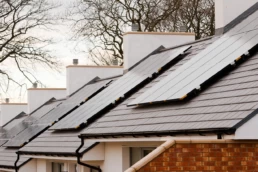The world’s housing has something of an emissions problem.
Residential properties are responsible for between 17–21% of energy-related carbon emissions globally. That figure covers everything from the electricity we use to power televisions and other electronic devices, as well as the fuel we use to heat our water and cook – but in cold climates the majority of a house’s energy budget goes on heating.
Add in the carbon emissions released in the manufacture of concrete, metal and other building materials along with the construction process itself, and it’s clear that housing has a considerable role to play if the world is to meet its ambition to reduce global carbon emissions to net zero by 2050.
It is an important target – one that is necessary to keep global warming to within the 1.5C increase that nations pledged to aim for in the United Nations’ Paris Agreement on climate change.
The good news is that we already have the knowledge and tools we need to reduce emissions from housing. It could mean that by 2045, as the mid-Century emissions deadline approaches, the way our houses are built, heated and powered could look very different. Not only could these innovations make our houses cheaper to run but also make them more comfortable to live in.
“We have a huge amount at our disposal that we can use to address the environmental footprint of the built environment,” says architect Maria Smith, director of sustainability and physics at engineering consultancy firm Buro Happold and editor of a report from the Royal Institute of British Architects (RIBA) on decarbonising the building sector. “We shouldn’t feel like we need to wait for breakthrough technologies in order to act.”


